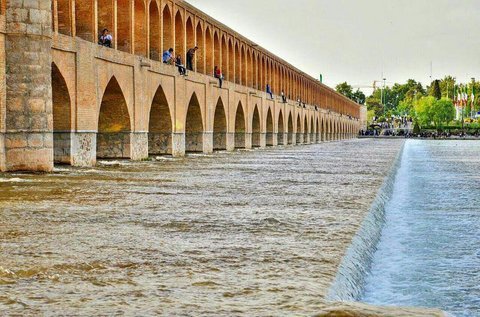The president, Esfandiar Amini, added that the streams will continue flowing, for about two days, throughout the city though.
“This year, due to the delay in the delivery of water to the farmers, we had to cultivate products later than usual”, he reminded and continued: Fortunately, spring rains of the year made up for the postponed cultivation.
Amini emphasized that the water is planned to run through the farms until June 9th, because the farmers in the east of Isfahan required to have one more round of outflow of water for cultivation.
The president of the Agriculture Committee expressed his sadness for the farmers in the east at the decrease in the wheat production and the increase of the plant and animal pests in products.
As the most important river in the center of the central plateau of Iran, Zayandeh-Rood has a length of about 350 km which originates from “Sarab” in central Zagros Mountain Chain and flows into “Gavkhooni” lagoon. The river, as the only water supplier for the Gavkhooni Lagoon, used to provide the needed water for the farmers in the region but is now converted into a seasonal river.
There are undoubtedly several reasons causing this great river to lack water or get dried gradually. The reasons include: industrial consumptions, population growth, mismanagement, imprudence, and also decreasing precipitation.
Reviving Zayandeh-Rood and Gavkhooni lagoon, and dealing with water crisis over the recent years have become among the most significant concerns of the provincial officials in Isfahan, and they have made serious effort regarding the issue.


Your Comment